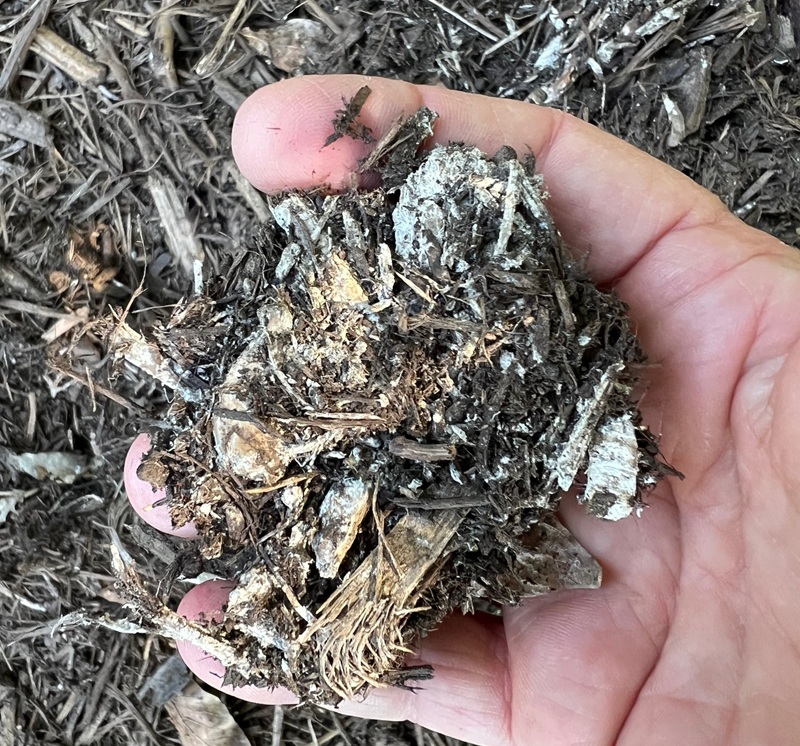While winter is generally the best time to prune plants, timing is important. Pruning too early may open up the crown of the plant to cold temperature extremes. We try to leave branches and foliage on most plants to serve as an insulator for the cold. Pay attention to recommended timing and you will be giving your plants the best opportunity to thrive in the spring.
Herbaceous perennials:
Herbaceous perennials are plants which die back to the ground in the winter, their foliage going to “mush” after a hard freeze. They may be cut back to the ground as soon as they freeze back, of the foliage may be left to insulate the top of the soil. Mulching is recommended for herbaceous perennial to insulate the root system. Examples are: Mexican Bush Sage, Copper Canyon Daisy, Katie’s Dwarf Ruellia, Russian Sage and Turk’s cap.
Evergreen perennials:
Evergreen perennials stay green all winter, but benefit from either a light shear or a “rejuvenative” pruning, especially if they are old and woody. Plants requiring a light shear, or “ponytail” cut would include Damianita, Rosemary, Blackfoot Daisy, Mexican Oregano, and Pink Skullcap. Cut only into the green growth on these, as severe into woody growth is not recommended. These plants lack lateral buds that will “fill in” after a hard prune. Salvia greggii often requires cutting back to the ground every few years, as it gets quite woody. Liriope will go “flat” in the winter, and all old growth should be cut off before new growth starts in the spring. Late February is the ideal time to prune these perennials.
Ornamental Grasses:
Cut back ornamental grasses in late February, just before growth starts in the spring. They may be cut back to 3”-6”. These include Big Muhly, Gulf Muhly, Pampas Grass, Maiden Grass, etc. Exceptions may be Bamboo Muhly and Gulf Muhly, which may not go dormant in a warm winter. Use your judgment on these, and if there is a lot of brown, go ahead and cut it down!
Woody perennials:
These are plants that have woody stems, and die back in varying amounts each winter. It is usually best to cut these back to the ground in late February so that new growth is produced in the spring. Lantana, Esperanza, Pride of Barbados and Almond Verbena are examples.
Spring flowering trees and shrubs:
Plants which bloom only in the spring produce this spring’s flower buds on last summer’s growth. Prune these plants immediately after blooming to avoid cutting off next year’s blooms! Examples are Flowering Quince, Spirea, Anacacho Orchids, Indian Hawthorne, Primrose Jasmine and Texas Mountain Laurel. Pruning is usually limited to shaping, or opening up the center of a tree to light. Texas Mountain Laurels frequently require lateral branches to be removed and may be lightly shaped.
Summer Flowering Trees and Shrubs, and Perennials:
These may be pruned as needed, throughout the season, without sacrificing blooms. Trees, such as Desert Willow may only need dead branches pruned out, and a little shaping. Shrubs such as Oleander may need no pruning, if the winter was mild, or they can also be cut to the ground if the winter was harsh.
Evergreen trees and shrubs:
These may be pruned as needed, throughout the growing season, if desired. Do not prune in the fall, as I’m sure you do not want to look at the cut branches all winter. Prune in February, right before new growth begins in the spring, so the new growth covers the unsightly cuts quickly. Large shrubs/small trees such as Photinia and Cherry Laurel and small shrubs such as Sandankwa Viburnum and Boxwood fall into this category.
Deciduous Trees:
Winter is generally the best time to prune deciduous trees. Remove the dead branches first, then work from the “bottom up” to remove crossing branches in order to allow more light into the center of the canopy. Oaks in the Red Oak group, such as Live Oak and Shumard Oak, should only be pruned between July and January, due to the activity of the Nitidulid Beetle, which may spread Oak Wilt Fungus. Remember, “February through June, do not Prune”!
Fruit Trees:
Fruit trees should be pruned in late February, ideally just before blooming. You can still prune them after they bloom, but it is best to do so before they expend energy doing so. Consult local university recommendations regarding the pruning method. For instance, peaches are pruned with an “open center” and apples with a “central leader”.




